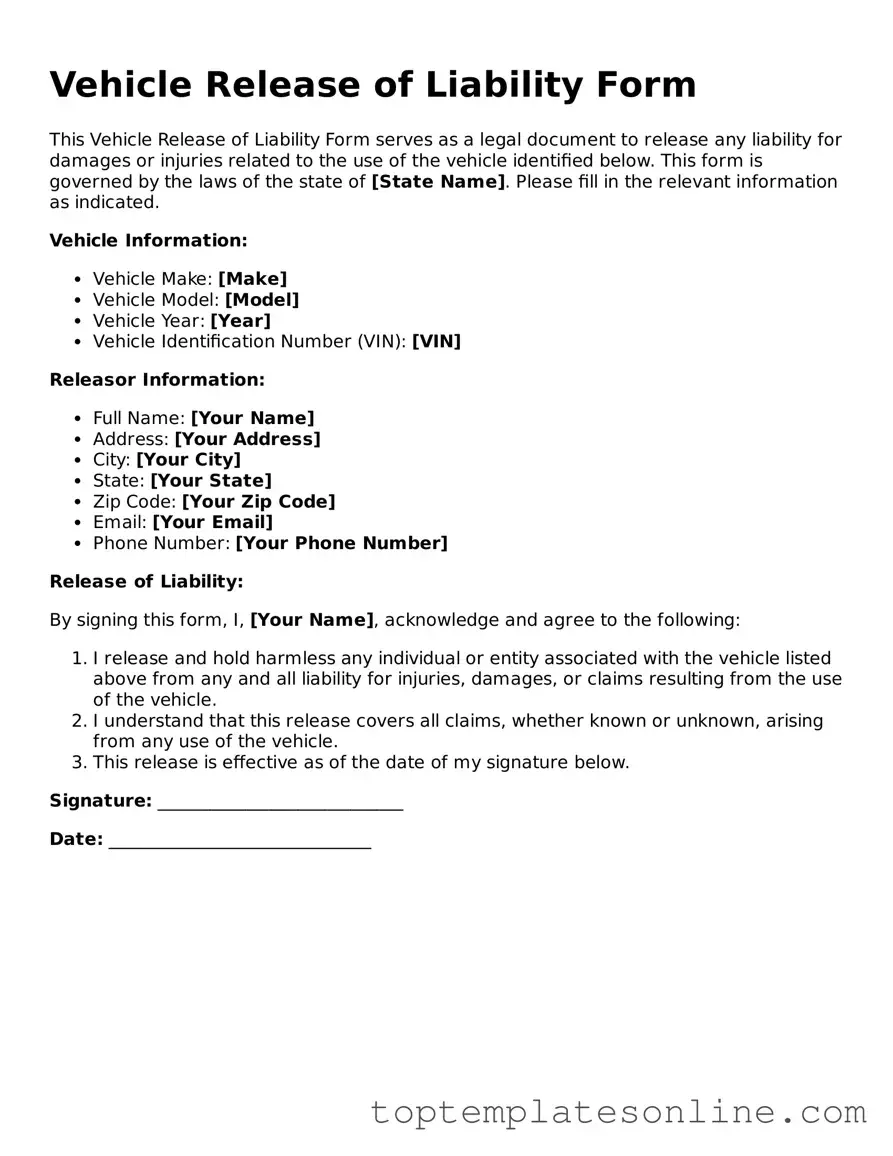Attorney-Approved Vehicle Release of Liability Form
The Vehicle Release of Liability form is a legal document that protects vehicle owners from potential claims or damages resulting from the use of their vehicle by another party. By signing this form, individuals acknowledge the risks involved and agree to release the owner from any liability. Understanding the importance of this form can help both vehicle owners and users navigate their responsibilities effectively.
Customize Vehicle Release of Liability Here
